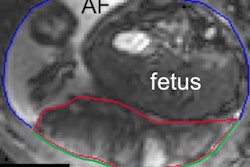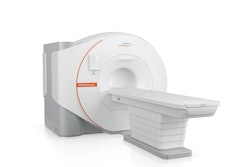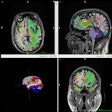A deep-learning algorithm used with sagittal T2-weighted MRI images helps predict a woman's likelihood of postpartum hemorrhage, according to a study published June 24 in Academic Radiology.
The results could save lives, wrote a team led by Wenzhe Zhang, MD, of the Third Affiliated Hospital of Zhengzhou University, Zhengzhou, China.
"Earlier identification of the patients at risk of postpartum hemorrhage is critical for optimizing the delivery plan, preparing necessary blood products, and minimizing adverse maternal outcomes," the group noted.
Around the world, postpartum hemorrhage is one of the primary causes of complications and fatalities among women, and an estimated 25% of postpartum deaths result from hemorrhage, the team noted. MRI -- particularly T2-weighted imaging -- is a "crucial tool for evaluating placental abnormalities," the investigators explained, and using the modality with AI, particularly radiomics and deep learning, further boosts its effectiveness for this indication.
Zhang and colleagues sought to compare the performance of 2D and 3D deep learning, radiomics, and fusion models (early and late fusion) to predict postpartum hemorrhage via a study that included 581 pregnant women with suspected placenta accreta spectrum disorders who underwent placental MRI assessment between May 2018 and June 2024. The team divided the study cohort into training and validation sets (n = 470 and n = 160, respectively) and tracked AUC, sensitivity, and specificity to assess the models' performance.
The team found that the deep learning late-fusion model was the most effective for predicting postpartum hemorrhage based on sagittal T2 MRI images of the placenta compared to the other models. (This model used a "stacking ensemble learning approach" to integrate the output probabilities from the radiomics, 2D deep learning, 3D deep learning, and clinical models.)
| Comparison of a variety of models to predict likelihood of postpartum hemorrhage | ||||||
|---|---|---|---|---|---|---|
| Measure | DL early-fusion | DL late-fusion | 3D DL | 2D DL | Radiomics | Clinical |
| AUC | ||||||
| Training set | 0.93 | 0.95 | 0.91 | 0.81 | 0.83 | 0.81 |
| Validation set | 0.89 | 0.9 | 0.89 | 0.75 | 0.68 | 0.8 |
| Sensitivity | ||||||
| Training set | 86% | 88% | 83% | 71% | 78% | 78% |
| Validation set | 83% | 92% | 92% | 66% | 54% | 72% |
| Specificity | ||||||
| Training set | 89% | 91% | 88% | 74% | 74% | 72% |
The team concluded that "while further validation is needed before implementing our models clinically, this research contributes to more precise preoperative diagnoses and better-informed treatment choices for postpartum hemorrhage."
Access the full article here.




.fFmgij6Hin.png?auto=compress%2Cformat&fit=crop&h=100&q=70&w=100)




.fFmgij6Hin.png?auto=compress%2Cformat&fit=crop&h=167&q=70&w=250)











